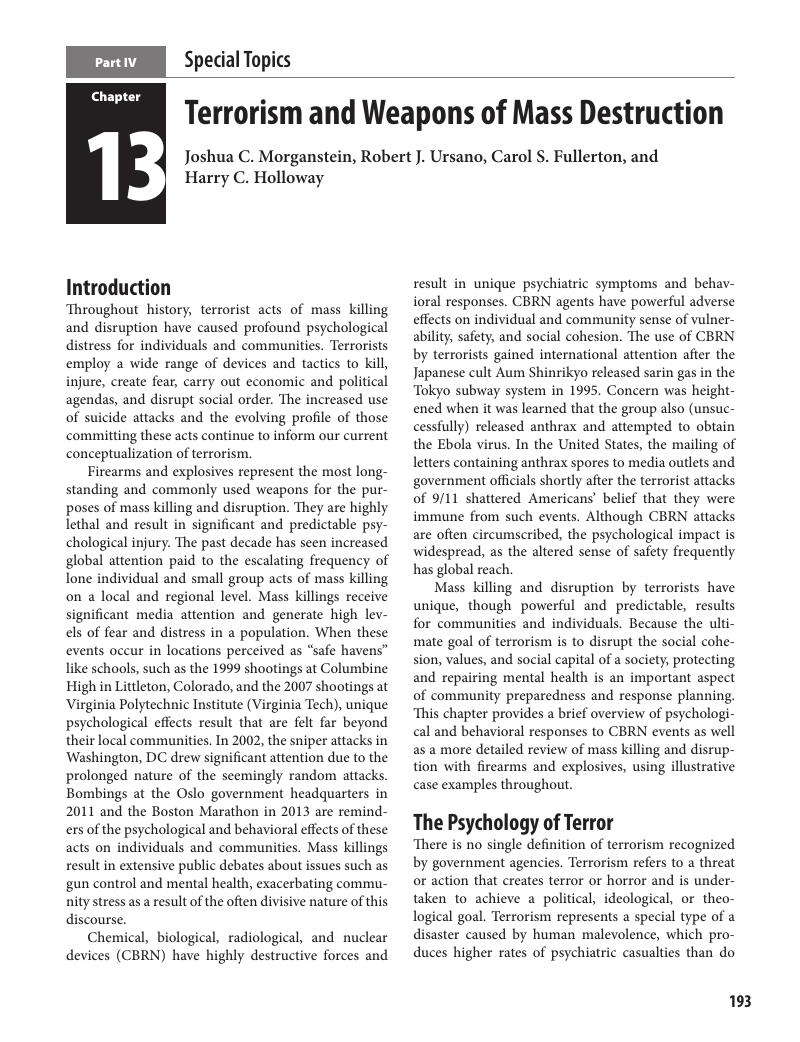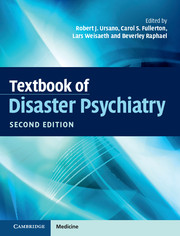Book contents
- Textbook of Disaster PsychiatrySecond Edition
- Additional material
- Textbook of Disaster Psychiatry
- Copyright page
- Contents
- Contributors
- Preface
- Part I Introduction
- Part II Foundations of Disaster Psychiatry
- Part III Clinical Care and Interventions
- Part IV Special Topics
- 10 International Disaster Response
- 11 Risk Communication in Disasters
- 12 The Unintended Consequences of Disaster-Related Media Coverage
- 13 Terrorism and Weapons of Mass Destruction
- 14 Children and Families Responding to Disaster and Bereavement
- 15 Disaster Workers
- 16 Health Care Planning for Community Disaster Care
- 17 Workplace and Organizational Disasters
- 18 Pandemics: Health Care Emergencies
- 19 Leadership in Disasters
- 20 Nuclear Disaster Response
- 21 Ethical Issues in Disaster Psychiatry
- Part V Public Health and Disaster Psychiatry
- Index
- References
13 - Terrorism and Weapons of Mass Destruction
from Part IV - Special Topics
Published online by Cambridge University Press: 02 June 2017
- Textbook of Disaster PsychiatrySecond Edition
- Additional material
- Textbook of Disaster Psychiatry
- Copyright page
- Contents
- Contributors
- Preface
- Part I Introduction
- Part II Foundations of Disaster Psychiatry
- Part III Clinical Care and Interventions
- Part IV Special Topics
- 10 International Disaster Response
- 11 Risk Communication in Disasters
- 12 The Unintended Consequences of Disaster-Related Media Coverage
- 13 Terrorism and Weapons of Mass Destruction
- 14 Children and Families Responding to Disaster and Bereavement
- 15 Disaster Workers
- 16 Health Care Planning for Community Disaster Care
- 17 Workplace and Organizational Disasters
- 18 Pandemics: Health Care Emergencies
- 19 Leadership in Disasters
- 20 Nuclear Disaster Response
- 21 Ethical Issues in Disaster Psychiatry
- Part V Public Health and Disaster Psychiatry
- Index
- References
Summary

- Type
- Chapter
- Information
- Textbook of Disaster Psychiatry , pp. 193 - 212Publisher: Cambridge University PressPrint publication year: 2017
References
- 2
- Cited by

